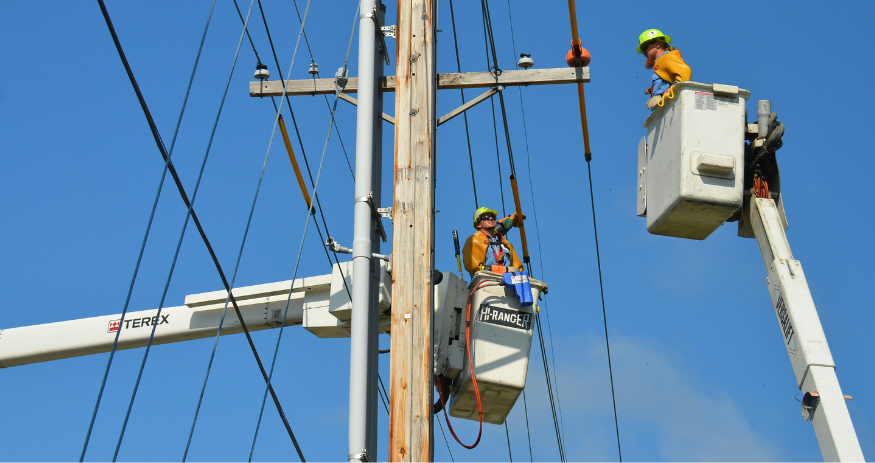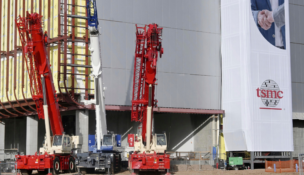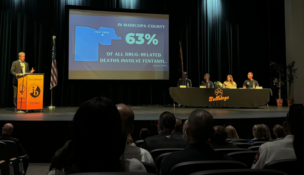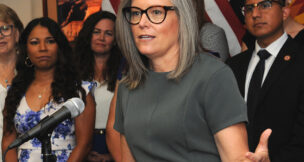Apprenticeship programs fight blue-collar stigma
Kiera Riley Arizona Capitol Times//November 23, 2024//[read_meter]
Apprenticeship programs fight blue-collar stigma
Kiera Riley Arizona Capitol Times//November 23, 2024//[read_meter]
Mike Malloy, training director for the Arizona Pipe Trades, found his way to an apprenticeship program on a “fluke.”
As a high school student, Malloy never considered going into a skilled trade. He remembers guidance counselors “used to threaten you that you were going to grow up to be a construction worker if you didn’t pay attention in class.”
So, he tried out the college route, but dropped out after a semester.
His path seemed unclear until his father, a fleet manager at a car dealership, had a conversation with a client.
“He gave me the phone number of the union hall and told me to call down there and inquire about an apprenticeship,” Malloy said.
A week later, Malloy took his aptitude test, and three weeks later, he started as an apprentice in the program. More than 30 years down the line, Malloy now oversees the program he once started in.
“When I stumbled across this, it was a fluke, because back then, we were the best kept secret in the state of Arizona,” Malloy said.
Skilled labor apprenticeship programs are “earn-while-you-learn,” affording students education applied hands-on as soon as the next day, without any compounding debt. Once in the trades, workers see a livable wage, fairly solid job security and opportunities for upward mobility.
Though apprenticeship programs have made great strides in getting the word out, training directors say a stigma still exists when pitching skilled labor as opposed to a four-year college degree.
“You didn’t show these kids that there’s a whole world of opportunity out there for them. You funneled them into a four-year degree and told them that if you ever want to make anything out of yourself, you’ve got to go to a university and you’ve got to get that diploma,” Malloy said.
Malloy said the stigma still exists, but not to the extent he experienced as a student himself. He noted a growing movement in schools and in the state to paint skilled labor as a strong career path.
Beyond pipe trades, Arizona has a host of registered apprenticeship programs, with 33 currently accepting applications.
Shawn Hutchinson, program director for the Phoenix Electrical Apprenticeship Program, said despite growth in his program, facing “the college machine” can still be daunting.
“The stigma still is today that to be really successful in life, you have to have at least a bachelor’s degree, if not a master’s,” Hutchinson said. “It’s disappointing that we still don’t get the same level of attention.”
But he senses that’s changing, noting the trajectory is made most clear in looking at the number of apprenticeship applications.
He said about ten years ago, the program would typically bring in about 200 to 400 applications per year. This year, the program is on track to hit about 2,200.
Hutchinson attributes the growth in part to rising demand for construction labor in the state and a greater statewide focus on apprenticeship programs.
He pointed specifically to BuilditAZ, a statewide program aiming to double the number of construction and trades registered apprentices.
Gov. Katie Hobbs allocated $500,000 in funds from the federal Workforce Innovation and Opportunity Act to expand existing employer-funded registered apprenticeships, deemed a “down-payment for future expansions and investments in apprenticeship programs.”
“It translates to the high school counselors,” Hutchinson said. “It translates to people who are in the space of getting high school graduates onto a proper career path. With all the opportunities that we have today, I think that’s translated to a lot of advice to young kids saying, ‘Hey, get yourself into a trade.’”
Though on the up-and-up, Hutchinson noted particular difficulty in getting more women on a skilled labor track.
In FY2025, of the 8,571 active apprentices in the state, only 12.82%, or 1,099 are female.
In the state, though, the total number of apprentices and the share of female participants continues to grow. In FY2020, Arizona had 4,795 active apprentices, with 7% being female.
“We’re losing 50% of our population already on a stigma that construction is not for females,” Hutchinson said. “We are seeing growing numbers exponentially every year for female participation in the program, but we’re still trying to overcome that stigma.”
Now, as training directors, both Hutchinson and Malloy work in partnership with Career and Technical Education Programs, school districts and show up at career and job fairs to spread the word.
Though there are still hurdles ahead, Malloy said it’s a far stretch from the shrouded stigma he encountered as a high school student himself.
“We’re no longer that best kept secret,” he said.


















